[Megan Cain, Founder and C.E.O., The Creative Vegetable Gardener]
All right, welcome, everybody, to Easy Food Preserving, Canning Free. I’m happy you’re here. I wasn’t sure how food preserving was going to go over, so I’m happy to see that we have a full room. It’s a topic that I like to talk a lot about.
So first, I just like to introduce myself a little bit, how I became a gardener. A lot of people assume –
[slide titled How I Became a Gardener with a photo of vegetables to the left of the title]
– that I grew up on a farm because I teach gardening-
[slide with two photos, a large aerial view of Philadelphia with a photo of a row home inset with a red arrow pointing to a spot on the aerial photo – with the title Growing up in a row home]
– but I really grew up in the opposite of a farm, which is a row home in Philadelphia. I didnt – we didn’t have a yard.
[Megan Cain]
I didn’t know anyone that had a garden. We actually didn’t eat vegetables growing up, so I never actually thought about how vegetables are grown. And then, so, a few years ago, I emailed my mom and said, Can you send me a picture of me –
[slide with a photo of Megan and her mother in front of their row home with the title Me=City Girl]
- in a garden when I was little? because she actually – we actually did have a yard for a few years. This is what she found, me with an azalea bush. That’s about the extent of it.
But she sent me this great note.
[slide with the copy of the note that Megans mother sent to her, read below]
Here are the only photos I have where you’re even near a plant. Apparently, after your sixth birthday, we never let you near another flower or garden. I can only plead that we are city folks and always have been. We have plenty of photos of you on concrete.
[laughter]
Love, Mama, Queen of the Concrete Jungle. [laughs]
So, that’s a real note, and I thought, Oh, I had to put that in my class – in my workshop.
[Megan Cain]
It’s so great.
So, then when I was 26, I was living in San Francisco, another big city, and for some reason I started to think, I want to learn how to grow food and I just say it must be because I lived in California and youre – weird things happen to your brain when you live in California, and so I ended up moving to a town –
[slide with a photo of a little shack with a blue framed door]
– of 100 people in northeast Missouri. Very rural. Very much a shock to my system. And I ending up shacking up in this little 90 square foot cabin slash shack with my now husband.
[new slide of a photo of a small garden with stakes around it]
And then that was when I really fell in love with gardening – that year. And you can see the – the shack is in the back, and that was our first garden we ever created. We were very artistic. We created a circular garden.
[laughter]
There’s a few things I wouldn’t do again in that garden, but were not – we won’t talk about that today.
[slide with a photo of Megans Rainbow Garden in Madison with three scarecrows in it]
And then I moved to Madison and I was hired to develop one of the kids’ gardening programs at Troy Gardens –
[new slide with a photo of Troy gardens in Madison]
– if you’re from Madison, and then I also created a youth farm program that’s also in Madison.
[new slide with a photo of Megans new house and yard]
And then a few years ago, my husband and I sold our last house and then bought our current house, and it was totally overgrown. You couldn’t see it from the street. So, we – first thing we did was clear out a lot of the shrub – overgrown shrubs. That was where a lot of the sun is.
[slide with a photo of a large garden on the side of Megans current home]
And then this is the next weekend.
[laughter]
Just kidding. If I knew how to do that, that would be a really good class. A one-week garden. No, this is two years later. [laughs] It was a process.
[new slide with a photo of Megan and her husband in front of their house and garden]
And then that’s another shot.
[slide with a photo of the front of Megans current home with two small trees in front and part of the driveway in view before the garden was planted]
So, I live on a pretty busy corner of walkers and bikers and -and some cars. And so, the garden is in the front, and then it wraps around the back, or around the side, really, because there’s more sun there. So, we – we cut down those two small trees –
[new slide of Megans front yard, now with the two trees removed and a garden in its place]
– and then put a vegetable garden along the side, as well.
[new slide titled Whats the theme? Community!with a photo of two people in gardening boots taken looking down from head height]
So, the theme, I think, that runs through that introduction is community. And I love gardening and the gardening community –
[Megan Cain]
– and I like to teach, and I like to learn in community. So, I would love to invite you to join my community. I have – I’m trying to make a – a
[slide with the title Heres how you can join my community and below a list of ways, email, free Facebook group and Garden club]
– gardening community that’s free of geographic limitations. So, I have a free Facebook group with gardeners from all over the world. We’re actually having a planning party right now. And then I have an email list which the wonderful volunteers are going to pass around. You’re welcome to sign up for it. I send out an email once a week with a timely gardening topic.
[new slide titled The Creative Vegetable Gardener with its mission Educate and inspire people to get more from their vegetable gardens, along with simple and elegant garden solutions and learn in community – make less mistakes and have more fun]
And then my business is The Creative Vegetable Gardener. So – so, I educate and inspire people to get more from their vegetable gardens, so more food, more beauty, more joy. Whatever you want more of, I want to support you in getting that.
And I like simple and elegant solutions, so that’s what we’re going to talk a lot about today with food preserving. I always try the most simple thing first, and if that doesn’t work, I try the next complicated thing.
And then I like to learn and teach in community, because I think when you learn about gardening –
[Megan Cain]
– in community like all of us together here, you make less mistakes and you have more fun. So, hopefully we’ll have some time to share some of our – the – I can’t imagine how much knowledge is in this room, how much gardening experience. It’s probably thousands of years.
And then I didn’t bring handouts because I speak to hundreds of people this weekend, but if you sign up for my email list, I’ll email you the handout in case you want to refresh your memory.
Okay. So, why might you want your garden –
[slide with the title, Why might you want your garden to feed you all year? with a photo of a basket full of vegetables below]
– to feed you all year? And we can actually –
[new slide with the title, How many months of the year do you eat food from your garden? with a photo of chopped vegetables in a skillet below]
– back up to this one. So, how many months of the year do you eat food from your garden? So, I, today, was eating a soup that I brought that I looked in – in my thermos and I thought, Oh, I’m eating a whole bunch of things from my garden.
[Megan Cain]
How many people this week ate something from your garden?
[Wide shot of audience with most of the people in the audience raising their hands]
All right, so some – some people are doing a great job.
[Megan Cain]
There’s no reason why you can’t be eating from your garden, food from your garden, not necessarily directly out of my garden this time of year, but food from my garden all year round. That’s my goal.
So, why might you want to do that?
[return to the Why might you want your garden to feed you all year? slide]
[new slide titled, Save money with a photo of three buckets full of blueberries below it]
Well, you save money. So, if you go food shopping this time of year, things are, kind of, at their highest prices because they’re coming from very far away. So, when you put away some of your own food, you can save money. A few years ago –
[Megan Cain]
– I – so, I – we’ll talk about this later – but I store butternut squash in my basement, and one day, I went food shopping at the grocery store, and I saw a butternut squash that was a similar size to one I had in the basement, so I thought, I wonder how much this is. So, I put it on the scale, and it was 12 bucks.
[laughter]
It was probably Feb-February, and I thought, The one I have in my basement was probably a dollar, two dollars, in September. I actually didn’t grow it. I just bought it from the farmers’ market, and I thought, Yeah! Look how much money I saved, because I had like 10 butternut squashes down there. So, it’s a great way to save money. Blueberries is another way.
[return to the Save money slide]
They’re very expensive this time of year. I eat a lot of smoothies, and I just used blueberries that I picked in the summer and froze in my smoothie this morning. So, a great way to save money.
[new slide titled, Higher quality with a photo of a bowl of vegetables below it]
Higher quality. I think we all know this as gardeners that sometimes the things we get at the grocery store don’t taste as good as the things that we get out of our garden. And I think frozen –
[Megan Cain]
– I cook down and freeze a lot of tomatoes, which we’re going to talk about later, and I think that’s a really good example, because when I buy canned tomatoes from the grocery store versus my own tomatoes that I froze, my own tomatoes taste so much better. They’re so sweet and so flavorful. So, we can – we can have some of that high quality that lasts longer throughout the year. And then –
[slide titled, Enjoy the fruits of your labor, longer with a photo of a close up of hands picking beans from a garden]
– you get to enjoy the fruits of your labor longer. Gardening is a lot of work. It’s a lot of joyful work, for sure, but it’s still hours and time and money invested. And so, a day like today in February when I’m still eating food out of my garden, I really feel like I’m getting my money’s worth, my – the most –
[Meagan Cain]
– for my labor and my time and my money because I’m continuing to eat from my garden all year round.
So, [laughs] So –
[slide titled, Why I hate canning with an illustration of canned goods in the foreground and a couple dancing in the background]
– this is not really true, but I like to say that why I hate canning. So, how many people have spent a day in the kitchen canning? It’s maybe 85 degrees. You’re canning whatever –
[Megan Cain]
– tomatoes, and at the end of the day, you feel so relaxed and so wonderful that you’re dancing with your partner –
[laughter]
– to, right, to music or whatever because you just accomplished a day of canning? Anybody feel like that at the end of the day canning?
[Wide shot of audience with no one in the audience raising their hands]
So, yes, usually at the end of the day of canning at our house –
[Megan Cain]
– like, my hair is all crazy sticking up and my husband and I are both sweating, and the kitchen looks like it exploded and it – we have tons of cleanup and we have like 18 jars that we – that we canned, which is okay.
So, when I lived on that farm, that’s how I learned how to food preserve, was canning. And then we moved to Madison and I realized I don’t really like canning that much. And it’s fine if you’re somebody that does. If you enjoy it, I think you should do it. But if you don’t like it, if you’re like me, I started to realize there has to be easier ways to put away food. I – I shouldn’t have to can everything. So, we do can salsa. That’s the only thing we can every year. And no, we don’t look like that at the end of a canning day. We might be arguing by that time. [laughs]
[return to the why I hate canning slide]
[new slide with a photo of Megans book, Super Easy Food Preserving]
So, some of the things we’re going to talk about today is from my book, Super Easy Food Preserving. So, I – I – after the years of talking to people about preserving, I – Iwould say, Did you know that you could freeze kale raw? or, Did you know you could do this? and people would say, No, I didn’t know that. And I started to think –
[Megan Cain]
– Okay. Theres – it would be fun to just get all this information in one spot. So, I did write a book. And so, some of the things we’re going to talk about, you’ll see there are some pages from the book –
[return to the slide of the book cover]
– so, just so you know what we’re looking at.
[new slide with the title, Preserve what you eat with a photo of a person holding out vegetables in her hands]
So, the first thing that sounds pretty obvious is preserve what you eat. I have become victim to this in the past. Cauliflower. Why did I freeze cauliflower? I have no idea, and then two years later, I find it at the bottom of the freezer, and I think –
[Megan Cain]
– Yeah, I don’t think we eat frozen cauliflower, or We don’t eat, you know, chard, I think, is another thing I’ve frozen that we never eat – eat. And so, you want to preserve something that everything that you preserve you really want to make sure you’re going to go through. So, I do have these questions –
[slide with the title Questions to ask yourself and a list of questions relating to cost, flavor, access and ease of preservation]
– and maybe we’ll come back to these at the end. This is one of the things where I have people think about it and talk amongst yourselves.
But some questions to think about when you’re getting ready for preserving season, which usually isn’t until summer, what produce do you spend the most money on throughout the year? Which vegetables taste better when you eat them in season? Which vegetables would you eat more of if you had better, more access to them throughout the year? So, I know for my sister, she was talking about this time of year there are certain things she just doesn’t buy at the grocery store because it’s too expensive. But then, so, then maybe there are some things that you could put away that it wouldn’t matter what – what price they are this time of year. And then, what vegetables are easy to preserve for out of season eating? So, what vegetables are in that list for you and then are also easy to preserve?
So, I also take this strategic view for gardening, as well. So, you’re looking – youre thinking more strategically. What do I eat?
[Megan Cain]
What do I buy from the grocery store? What dishes do I cook on a regular basis? You can deconstruct some of those. So, if you – for us, we eat a lot of beans and rice is kind of an easy go to if we don’t have another plan for dinner, and so, we put away garlic and onions, two of those ingredients, freeze peppers, freeze corn, make salsa, so that we have a lot of those ingredients on hand and they’re from our own garden. So, you could do that with your – your own menu that you eat often at home. Maybe it’s pasta and red sauce or garlic bread or pesto. Deconstruct some of those dishes and see, can you grow some of those things in your own garden and then preserve them so that you don’t have to buy them from the grocery store?
So, a few years ago, I was at the farmers’ market, and I’m – Im a big gardener, but I still go to the farmers’ market and buy things, and I would buy things maybe that I didn’t grow, like blueberries or strawberries or cantaloupe. And then one time I thought –
[slide titled Lightbulb moment! with the point that you dont have to grow everything that you preserve]
– Why don’t I buy things for preserving? And then all of a sudden, I thought, That’s a great idea! So actually, over the years, I now grow less tomatoes in my garden and I just go to the farmers’ market during the height of tomato season and buy tomatoes for a dollar a pound and supplement what I already have. But you don’t have to grow everything you preserve. And I’ve had a lot of people who have emailed me or come up to me after class and – and say, It sounds so common sense, but when you said it, it was like this big light bulb –
[Megan Cain]
– that I thought, ‘Oh, yeah.’ I just used to look at my garden and, like, what I preserve is the things that come out of my garden. And that’s not – very much not the case for me. When you saw those buckets of blueberries, they weren’t from my yard. I go to a blueberry farm and pick, I pick 25 pounds of blueberries, freeze them, and then just use them all year round.
So, that – I – I felt like that let me off the hook, and so there are some things now that I preserve that don’t come from my own garden. And you can go to a U-pick farm and you can go to the farmers’ market, and when it’s during the height of the season of certain vegetables, they’re so inexpensive, so you can get some really good deals. Sometimes it’s cheaper to buy them than to grow them yourself.
So, blueberries are an example of that.
[return to the slide with the three buckets of blueberries]
I tried to calculate how many pounds of blueberries I eat a year, because I put them in my smoothies every – every morning, and I think I calculated 37 pounds, I think. [laughs]
[Megan Cain]
And I still have not been able to pick 37 pounds in – in one picking. But last year, my friend came, and she picked some for herself and some for me, so I had 25, and I still have some left over. I still have a few bags left. So, I thought, Well, I’ll write down to see, when do I run out? I think I’ll run out probably by April. I’ll have to wait until July. So, you can also do that, try to calculate how much. It’s kind of fun to figure out how much you use of something so you can grow it or buy it so that you only – you only use your own all year.
And then butternut squash is –
[slide with a photo of Megan holding a crate full of butternut squash]
– another one where I realized it takes up a lot of room. It’s quite a time investment, 110, 120 days. Big, sprawling vine. I don’t know that I want to give up the room for butternut squash. Sometimes you only get three, five, six off of the vine, and so I decided I’m not going to grow it anymore. I’m just going to go to the farmers’ market in October, and butternut squash is a dollar, two dollars each. And I just fill up a whole bunch of crates and store them, and we’ll talk a little bit more later how, and then eat them all winter. We still have some in the basement right now. So, that’s probably less than 10, maybe 10 dollars’ worth of squash.
[new slide titled, Choose 3-5 priorities for preserving with a photo of three bowls of vegetables on a picnic table, one bowl of eggplant, one bowl of beans and one bowl of red peppers]
So, once you think about those questions that were on that previous slide – we’re thinking a little bit more strategically and deciding – I recommend starting with three to five priorities for food preserving. And then if you accomplish those things, then you can keep going. But what are your – what are the things that you really want to have –
[Megan Cain]
– the things that you’re really going to eat a lot of? In our house, it’s garlic, onions, tomatoes, peppers, and probably pesto would be my top five. So, those are the things I direct a lot of my energy towards, and then there’s some other things that we preserve, as well. And then I also have – devote a big part of my garden to those things, because we eat a lot of them, I preserve a lot of them, so I’m going to grow a lot of them.
So, today we’re going to talk about three –
[slide titled, 3 Quickest and Easiest Ways to Preserve Food and the three Fs listed below, Fresh, Fridge and Freezer]
– easiest ways to preserve food using – preserving it or really storing it fresh, which would be the easiest. It is my first choice. Then in the fridge, and then in the freezer. So, no stoves. Well, maybe a little stove involved, but not too much.
[new slide with the title Fresh and a list of places fresh vegetables can be stored, basement, semi-warm garage, or closet]
So, fresh is vegetables kept in their natural state in a cool, dry place in your house. So, maybe a basement or a semi-warm garage or a cold room or a closet, somewhere that doesn’t – doesnt freeze. So, for me, it’s my basement.
[new slide with a photo of vegetables being stored in the basement of Megans home]
And this is actually my old basement, which was pretty warm because it was in a new house. It was unfinished and we didn’t hang out there a lot, but it was still in the 50s often, maybe the 60s in the winter. But I still was able to store quite a bit. I don’t have a root cellar. I don’t really do anything fancy. I use these crates. They’re actually bulb crates from Jung’s. You can go get them, and I think Felly’s you can get them from, as well. They’re only a few dollars. You can buy a bunch of these crates. They stack really well.
So, on the right, we have the onions that we store. So, I grow a lot of storage onions, somewhere between three and five hundred onions. And then on the left are two just waxed boxes I got from the grocery store, filled with garlic. So, I usually grow about 220 garlic so we can use our own garlic throughout the year. Both of those are – I grow storage varieties, so that’s one thing you want to keep in mind that if you’re looking for things that you want to preserve or store, you want to try to grow storage varieties.
[return to the slide of Megan holding a crate full of squash, now titled Winter Squash]
So, winter squash, back to that picture. Like – like I said, I don’t grow it. That was my light bulb moment. I just go and buy it. I usually buy somewhere between 12 and 15. Its enough – usually by the end –
[Megan Cain]
– of the 12 or 15, I think, I really don’t want to eat butternut squash anymore. So, we have enough that we get sick of it, so that’s success, I would guess. And then sometimes we buy a couple acorn squash. They don’t store as well, so we eat them first.
[return to the Winter Squash slide]
And then there’s lots of – so many different kinds of squash, and there are some that are specifically for storage. So, butternut is not the only one that you can store, but you just want to look for ones, and – and if you’re growing them in your own garden, look for some ones that say, Good for storage, if you think you want to try to keep them over the winter. So, I just put them in those crates, and I just stack the crates.
Now I have a little room in my basement that kind of looks like it would be a root cellar. It’s not, but it’s just a closet and it has no windows –
[Megan Cain]
– and it has some shelves. So, I just put – lay them out in a single layer in those crates, and then I just stack the crates and – and then put ’em in that closet so they don’t have any light and it stays pretty cool.
So, some other things that you can do fresh –
[slide titled, Fresh with a table of vegetables that are favorites for storing fresh as well as herbs that are best dried]
– are garlic and onions, we already talked about. Potatoes you can store. Sweet potatoes. I actually have sweet potatoes. I grew sweet potatoes for the first time in a long-time last year, and I have a few crates of sweet potatoes, as well. We’re still eating them. They like to be a little warmer, so I actually have them in my linen closet upstairs because they don’t really like to be that cold. They like to be on the warmer side. And then regular potatoes. And then spinach is a little bit of a cheat, because you can keep it fresh in your garden.
Has anyone ever overwintered spinach?
[Wide shot of audience with very few people raising their hands]
A few people. So, it’ll survive all winter in Wisconsin. It’s one of my favorite things to – to grow in my own garden is spinach, and it’ll start growing again in March –
[Megan Cain]
– and you can continue to harvest it. So, I plant it in August, harvest it all the way up through Thanksgiving, sometimes even to Christmas. Goes dormant right around this – Christmas to mid to end February, and then will start re-growing, so it’s kind of a cheat. You can store it fresh, and it’s so fresh that you can just store it in your garden. And it survives fine. No cover. I don’t have a greenhouse, anything like that. It’s just out in the garden.
And then there’s a few herbs.
[return to the Fresh slide]
Most herbs are best dried, so that’s kind of fresh – fresh slash dried. Very minimal processing needed to dry herbs.
[new slide titled, Fridge and its meaning as vegetables that can keep for long periods of time with the aid of refrigeration]
So, fridge is vegetables that can be kept for a long period of time with the aid of refrigeration. Pretty straightforward.
[new slide titled, Carrots with a photo of freshly picked carrots on a picnic table]
So, one of my favorite things to store is – are carrots. Last – I usually plant a fall – I – I should’ve put that picture in –
[new slide with a photo of a bunch of carrots in a white plastic bag]
– well, I – I might have that.
[return to the Carrots slide]
Let’s see.
[new slide titled, Fridge with a table of those vegetables that are good for fridge storage]
[Megan flips back to the Carrots slide]
I usually plant a fall crop of carrots sometime in July or August, and then I keep them in my garden all fall, periodically harvest them. This year, I harvested – in one of my other presentations, I have the picture. I went out on December 6th, this past December 6th, and it had already snowed.
[Megan Cain]
I went out with my fork and a couple of those crates and I harvested a whole bed of carrots. And I always think my neighbors probably drive by and think, What is she doing? She’s gardening in the snow? [laughs] This lady is a little off. But as long as the ground doesn’t freeze, you can store those carrots in your ground – in your garden. But I was suspecting that the ground was going to freeze soon, and they’ll turn to mush if you keep them too long. So, I dug them out of the garden, put them in those crates. I – I broke off all the carrot tops, and then I left the soil on. It was pretty wet, so my husband, I think who’s in – in this room, I’ll give him some – some – a little bit of credit, he said, You might want to spread those out to dry.
So, they were pretty wet. The soil was wet. So, I actually took them down to the basement, put them on some newspaper just overnight, let them dry out a little bit, and then I packed them into plastic bags so – with the dirt on. So, what happens sometimes –
[return to the slide of the photo of carrots in the white plastic bag]
– a lot of vegetables have a waxy cuticle that protects them, and when we start scrubbing and cleaning, you’re – youre inter – youre disturbing that cuticle. So, I just leave the soil on, and they just, kind of, hang out there, and then we just take out a whole bunch at a time and – and clean them and then use them for a few weeks and then take out a whole other batch.
So, I actually took this picture about two weeks ago, and I – I grow purple and yellow and orange. And that’s what it looks like. It still looks good. It’s been a few months in the fridge. Just put them in handle bags, and then I just shove them all at the back – the bottom back of my fridge. So, a lot of times when I teach this class, people say, How do you fit all that in your fridge? And my question to you all is –
[Megan Cain]
– What do you have in your fridge that you [laughs] that you can’t fit all these things? I don’t know. I have room. That’s basically all we have in our fridge is vegetables mostly. So, I do have room in my fridge. I don’t have two fridges. And you can do the same exact thing with beets. So, I usually have a whole bunch of bags. I probably had three or four bags full of carrots, and then I had – I grow less beets, so I had about a bag that big of beets. We’re almost through the beets. But they’ll last quite a long time, and actually, last summer, I found a couple beets just floating around the fridge in July from the previous fall, and they were fine. I mean, maybe they got a little tough. I don’t know, I actually just threw them in the compost because we had fresh beets from the garden, but I thought, Wow, lets – this is like nine months later and they’re still just hanging out in the fridge. And so, I like this because it’s minimal processing.
[return to the slide of the photo of the carrots in the white plastic bag]
I don’t have to can beets. I don’t have to pickle beets. And I actually prefer my – my vegetables fresh as much as possible. So, we eat most of the carrots fresh. Sometimes we put them in – in soups, and then the beets we tend to roast and cook, but sometimes we – we grate them and eat them raw. And I – and they taste – and actually, these carrots are really good, I think because I left them in the garden so long and so they got sweet with all the cold, but way better than most carrots are going to get from the grocery store.
[return to the Fridge slide]
So, for the fridge, it’s a smaller category, but beets and carrots will last a long time. Leeks will last some time, but they tend to go bad after a while. Cabbage will last a really long time, not quite as long as beets and carrots. And then cucumber is another cheat where you can either make fridge – refrigerator pickles last for a long time. This year, I fermented, made fermented pickles –
[Megan Cain]
– and supposedly, they last for two years in the fridge. And they’re really good. They’re really crispy and they have a really nice sour taste. So, if you haven’t done any fermenting and you like sour pickles, try it this year, because it’s really easy, minimal processing, and they last for a really long time and they’re really crispy. And then cabbage is something. For me, I – I don’t always grow cabbage because it takes up a lot of room. And so, Ill often – and you can buy a cabbage at the grocery – at the farmers’ market for a dollar. And so, sometimes I think, Okay, I have to – buy the seed, start the seed, plant it in the garden, it’s going to take 65 days, and I could buy one for a dollar. I think I’ll just buy cabbage. So, sometimes I’ll buy a bunch at one of the last farmers’ markets and just put them in my fridge and let them sit there for a few months until we use them.
[slide titled Freezer with the point being Vegetables that are pre-processed and kept in a chest freezer.]
So, freezer, vegetables that are a pre-processed and kept in a chest freezer.
[new slide titled, Tomatoes with at photo of whole and diced tomatoes below it]
So, pre-processed. Some things you can freeze raw, and some things benefit from a little bit of cooking before you freeze them. One of the things that’s really easy, because – and I think a lot of people tend to can tomatoes, and that’s great if you like to do that, but you don’t need to. So, what I do with tomatoes, they’re one of the easiest things to freeze. I just chop them up. So, I know that some – how many people take your skins off –
[Wide shot of audience a few of whom raise their hands]
– and your seeds out of your tomatoes? Anybody? A few people.
Yeah, so I decided I’m just going to get used to the skins and the seeds. I think what happens is the grocery – all the grocery store sauce is just velvety smooth, because they take off all the skins and they take out all the seeds, and so they’ve trained us to think like that’s the kind – what sauce is supposed to be like. So, I decided that’s way too much work, and I’m just going to eat the seeds and the skins. And so now I do, and we don’t even really notice them. Once in a while you get a little piece of skin in your teeth, but whatever. It’s not that big of a deal.
So, what I do is I just harvest my tomatoes.
[return to the Tomatoes slide]
Doesnt – if – if they’re paste tomatoes or if they’re not paste tomatoes, slicers, I don’t really care. I don’t care what color they are. I’ll just cut them all up, just chop them pretty roughly –
[slide with a photo of chopped tomatoes in a stainless-steel pan on a picnic table]
– and then I picked this tip up from some of my old coworkers, and then I spread it out in a big stainless steel casserole pan, and I put it –
[slide of cooked, chopped tomatoes in three large yogurt containers]
Do I have? No, I don’t –
[return to the slide of the chopped tomatoes in a stainless-steel pan]
– have a picture. Then I put it across two burners on my stove, and so, it’s cooking down a lot faster. And the reason why – so, you can – you can freeze tomatoes raw, but tomatoes have so much water in them that you’re freezing all of that water. And if you’ve ever frozen tomatoes whole and then you defrost them, you end up with, like, nothing, pretty much. It’s just, like, a bowl of water –
[Megan Cain]
– with some skins and seeds.
And so, I decided, Im – it’s a little bit more work, not the most simple, but I like to cook off as much of that water as possible because then those tomatoes are ready to use. So, I just cook it down on low for, I don’t know, an hour and a half or two hours in the evening at my house until its – it looks more like sauce.
[return to the slide of the cooked, chopped tomatoes in yogurt containers]
And then I put them in yogurt containers. I just save yogurt containers throughout the year, pack them in yogurt containers. And the way I use them is pretty much for anything. If there’s any recipe that says whole canned tomatoes, chopped canned tomatoes, anything canned tomatoes, I just defrost one of those and just throw it in. I realize it doesn’t really matter if it’s whole tomatoes, chopped, diced, whatever. It’s all the same. I never noticed a difference.
So, we use it for that. So, I haven’t bought canned tomatoes in years. And then we can – you can also use it for sauce. If you like it for sauce – we just did this the other night – we just used some garlic –
[Megan Cain]
– and onions from our basement, saut those up, dump one or two of those yogurt containers in the pan, add some salt and pepper and maybe some oregano, and then you have tomato sauce, with seeds and skins. But you can train yourself not to even notice.
Put a lot of other things in the pasta, and then you’ll never know.
And so, its – so, that – I think this is a good one where you – if you could set – if you wanted to set the goal that you never bought another tomato product again, it’s definitely possible. I haven’t bought a tomato product in years because I always have these yogurt containers of – they’re not even really sauce, tomatoes.
Tomato sludge.
[laughter]
[slide titled Freezer with a table of all the pre-processed vegetables, fruits and herbs that can be kept in a chest freezer]
So, freezer, and we can talk a little bit. Maybe I’ll highlight one or two more of these, but all fruits can be frozen. Basil, I often make a lot of mine into pesto. Beans you can freeze. Some – some places will say you should – you should do a little steaming or blanching of beans. I’ve also done them raw and they’re fine. Broccoli is some – one thing that I really put a lot away, as well. It would also be on my priority list. I do do a little processing where I just steam it very, very lightly.
So, with some of these things that need some pre-processing, the tip is not to overcook them before you freeze them. So, I was just talking to a friend and she said, Oh, I – I put –
[Megan Cain]
– away all this broccoli, but it’s so mushy my family won’t eat it. And we have had that experience when we have overcooked it before freezing. So, now I just steam it right until it gets bright green, and then put it in ice water to stop the cooking and then, kind of, dry it off and put it in freezer bags. And I just ate some in a soup today, and you would never know that it was frozen. It still has a little bit of crunch. Not crunch, but you know. It’s not mushy, let’s say. And it even got cooked in a soup.
So, that’s one thing to be careful. If you’re steaming or blanching things, just – just really quickly, so you’re not overcooking.
Celery –
[return to the slide with the Freezer table]
– easy to freeze. Chard you can do raw. Cilantro. Sometimes I make it into different sauces, but I’ve also done it raw. Collards, corn. I don’t actually freeze a lot of eggplant. I like it better fresh. Garlic scapes I make into garlic scape pesto. Kale is another one that I really freeze a lot of, and I just freeze it raw. I just rip up the leaves or cut up the leaves and just shove as much as possible into a little quart freezer bag. And we use it all – we actually were upset this week because we realized we used it all already.
[Megan Cain]
So, we use it in soups, and we use it in different dishes that we like kale in. I’ve heard of people just crumbling it, once it’s frozen, you can, kind of, crumble it into little pieces and put it in smoothies. You can use it all different kinds of way.
Leeks –
[return to the Freezer table slide]
– you can also freeze. Parsley you can freeze. I’ve done that. Peas you can freeze. We – we usually eat most of our peas fresh. Peppers is another one that I really love to freeze. You can just cut up peppers raw and throw them in a freezer bag. That’s one thing that we use a lot of during the season. When – kind of, like the butternut squash story, one day I – a few years ago I went into Whole Foods to pick up something, and I saw, Red pepper sale –
[Megan Cain]
– $3. 99 a pepper. I was like, Wow, that’s kind of expensive. And I thought, I wonder how many peppers I have in my freezer. I was like, I think at least 200. And I was like, Oh my gosh, I have – I have so much. I have, like, hundreds of dollars’ worth of peppers in my – in my freezer. So, that’s an example. I think red peppers are really expensive, certainly in the winter. And of course, it’s not like biting into a raw pepper, but if you – I think what happens in the winter, we tend to cook things a lot more than we might in the – in the summer where we eat more raw food. So, if you’re cooking a lot of your vegetables anyway, it doesn’t really matter if they’ve been frozen first. If you like – really like raw peppers, it’s not going to be quite the same.
Summer squash. Tomatoes –
[return to the Freezer table slide]
– we talked about, and then tomatillos. Sometimes I’ll cook down my tomatillos like I do my tomatoes.
[new slide with a photo of the inside of Megans chest freezer]
And then if you’re going to freeze food, it’s a good idea to use a chest freezer. When you have – you might’ve noticed in your – well, how many people in here have a chest freezer? So –
[Wide shot of the audience with a majority of the members raising their hands]
– a lot of people, yeah. So, they’re not that expensive. And they don’t take that much energy. And they are – remain at a constant temperature. So, sometimes you might notice –
[return of the slide featuring the photo of Megans open chest freezer]
– if you have ice cream in your upstairs, your kitchen freezer, fridge freezer, you rich in and it’s, kind of, defrosted and it’s soft, so it has a natural defrost cycle. And so, things are kind of defrosting and freezing again, and over time, some of the quality degrades. You can see if you leave ice cream in there for a long time it gets, kind of, crystallized. So, what I – so, it’s much better to have a chest freezer. And so, I store the majority of things in my chest freezer –
[Megan Cain]
– and then I just bring up one or two things periodically up into the upstairs freezer, and then we use it within a few weeks. And you can see here, I think the next slide –
[slide with a photo of the different types of containers that Megan uses to freeze vegetables in, including jars, freezer bags and buckets]
– is that I use all different kinds of containers. I use old, I think that white one had – it was, like, that was a huge peanut butter container, and I put tomatoes in there. I use – I do use glass canning jars, but you have to be careful because if you put something in that’s too liquidy it may break. And, you know, there’s people that say, like, if you use head space and you use, like, the wide mouth they won’t break, but I – I have had a lot of broken jars. So, I – I put – I’ll put broccoli in there. I’ll put corn in there.
[Megan Cain]
Or I’ll put raspberries in there. So, I put dry things in there, so they won’t break.
And then I use little jam jars with – for pesto mostly or if I made pizza sauce. And then I use a lot of plastic yogurt containers or Tupperware or whatever you want to use. And then for – I also use a lot of freezer bags. So, I try to get the freezer bag type, not just a – not just a cheap Ziplock bag, I try to get the freezer bag.
But the thing I like about all of these things is that you can use them over and over again. I would say the plastic bags have the least amount of life because they tend to get beat up. So, I do try to use containers as much as possible because then I can just use them every year instead of throwing away plastic bags.
[slide with the title, Goal of Super Easy Food Preserving with recommendation to preserve only what you can eat each year and a photo of a cutting board with a bowl of tomatoes on it and some chopped up tomatoes and a knife to the left of the bowl]
So, the goal of super easy food preserving is to preserve only what you can eat each year. So, my personal goal, which doesn’t always happen, is that by the –
[Megan Cain]
– I – I look at strawberry season. When strawberries come on, I, kind of, think, It’s the beginning of food preserving season again. And it starts slow, because I don’t preserve a lot in the spring or the early summer. But by the time strawberry season comes along, sometimes I go and pick strawberries, I think, I should be very much well through whatever is in the freezer. We shouldn’t have much left. Sometimes that works out better than others.
But it’s a waste of time and energy and money if you’re putting away lots of things that just languish at the bottom of your freezer for five years and then you end up composting it. I-I’ve been there and done that, but I’m trying to get better and just preserve what we eat and try to eat through it as much as possible and always be turning over that freezer.
[return to the Goal of Super Easy Food Preserving slide]
[new slide titled, Simple Record Keeping with an example of keeping track of how much food you preserve by factors such as date, item, amount, and year.]
So, the way that you can do this is by keeping records. So, I have gone through different ways that I keep records. In my book, I have a record – a couple record keeping sheets, and then you can print them out from my website. So, now I have a little binder, which I didn’t bring, and then when I put something into storage, I try to write it on the binder or on the sheet.
In the past, sometimes I would just put a sheet on my freezer, and every time I put something in the freezer, I would just mark it down. Sometimes I realized by the time I got upstairs I got distracted and then forgot to write it down. But what has helped is that now I know what is the ideal, at least for a few years, of food to put away. So, I have kept track of how much pesto I put away each year. And we don’t really use more than –
[Megan Cain]
– 12 to 15 pestos. We give some away. We use them throughout the year. So, even if I have basil still in my garden, when I get to 15 pestos in the freezer, I just stop, be-because it’s just not worth it. If we’re not going to eat it, then it’s not worth it.
And you can carry things over year to year, but I’ve found that some of the quality kind of degrades over time, so I try to eat everything as – as quick as possible, really. And so, you can just – then sometimes I just experiment with different things, and so I’ll write some notes.
[return to the Simple Record Keeping slide]
But keeping really simple records so that you’re not putting away – you know, if you put away 30 bags of kale but you only eat 10, you’ll know that next year, and so when I’m working on a vegetable, I’ll say, How many did I put away last year? And sometimes my husband and I will check in before food preserving season. It’s like, What did we want more of?
[Megan Cain]
– We wanted more kale. I already know we want more kale, because we used it all. It’s like, Well, how many did we put away?” We put away 12. We ran out in February, so maybe we should try to put away 20. And so, you, kind of, have a formula.
I do the same thing with my garden. So, I have a base formula for food preserving, and then I, kind of, add different things each year. Last year I made pizza sauce. So, you can change it up a little bit, but you – you don’t have to keep guessing every year. You know what your – your base foundation is.
So –
[return to the slide with the Super Easy Food Preserving book cover]
– let’s see. Super Easy Food Preserving. I do have lots of – if you want to read more about specific things – I have lots of food preserving posts on my blog that you can – I think I have a category of food preserving.
I did bring – a few people who are on my email list emailed me and said, Are you going to have your books with you? So –
[Megan Cain]
– I do have some books if you’re interested. And then the – the things that we talked about were –
[slide titled, What are you excited to try this season? with a summary of the main talking points of Megans lecture]
– preserve what you eat. You don’t have to grow everything you preserve. That was a huge game changer for me. We talked about fresh, fridge and freezer storage. Eat all the food every year if possible. And then keeping records.
So, I’d invite you to just take a couple seconds and in your own brain say, Okay, I’m going to try one or two things, maybe one thing –
[Megan Cain]
– that I learned today, and I’m going to commit to it. You can add it to your long list of all the things you thought about from all the other classes and decide, how are you going to do something different in food preserving this year?
And then maybe we’ll do this a little bit later when we’re done filming.
[laughter]
[slide titled, Thank you! with a photo of Megan next to her huge kale plant]
So, this is my huge kale. A few years ago, I have no idea why my kale got this tall, but it was as tall as I am. And one day – this is in the fall, and my husband and I came home one day, and I said, You have to take a picture of me with this kale. I’ve never grown kale this big. So, I decided to put it – I put it at the end of all my classes. So, thank you for coming and thinking about food preserving.
[Megan Cain]
And I think this is a great time to think about food preserving, because you can order food and order seeds and decide that you’re going to start some plants with food preserving in mind. So, one of the classes that I taught last night, one of the participants said, I actually reverse engineer my garden where I say, ’What do I want to put away? and then I make sure I’m going to grow all these things and makes sure I order the seeds and I start the plants. So, if you really like the idea of food preserving, you can, kind of, reverse engineer back to February when it’s time to buy seeds and it’s time to start plants and do those things with food preserving in mind.
So, when you’re looking through the seed catalogs, look for varieties that are good for preserving.
So, we’ll end there, and then I’m happy to take questions and we can talk about some more specifics if anybody would like to. So, thanks for coming.
[applause]
Search University Place Episodes
Related Stories from PBS Wisconsin's Blog

Donate to sign up. Activate and sign in to Passport. It's that easy to help PBS Wisconsin serve your community through media that educates, inspires, and entertains.
Make your membership gift today
Only for new users: Activate Passport using your code or email address
Already a member?
Look up my account
Need some help? Go to FAQ or visit PBS Passport Help
Need help accessing PBS Wisconsin anywhere?

Online Access | Platform & Device Access | Cable or Satellite Access | Over-The-Air Access
Visit Access Guide
Need help accessing PBS Wisconsin anywhere?

Visit Our
Live TV Access Guide
Online AccessPlatform & Device Access
Cable or Satellite Access
Over-The-Air Access
Visit Access Guide
 Passport
Passport


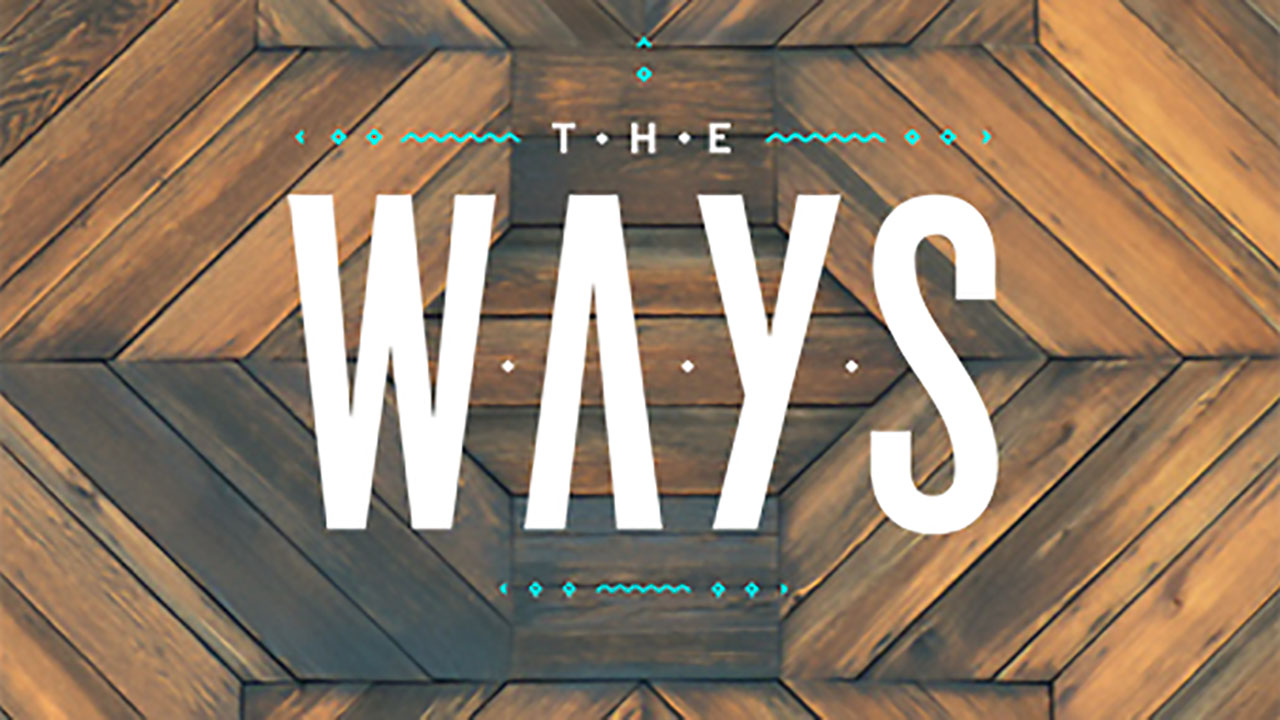





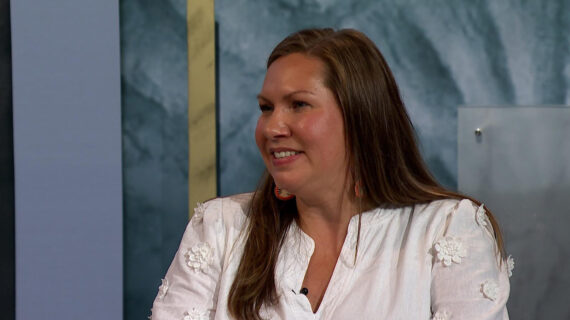
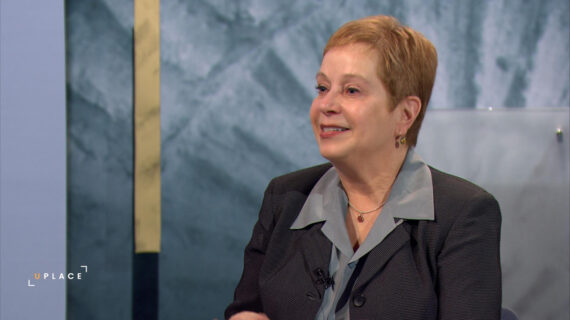
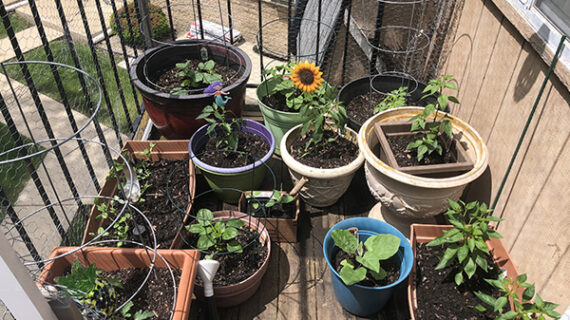
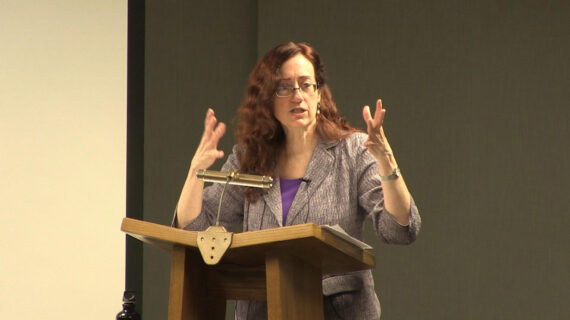
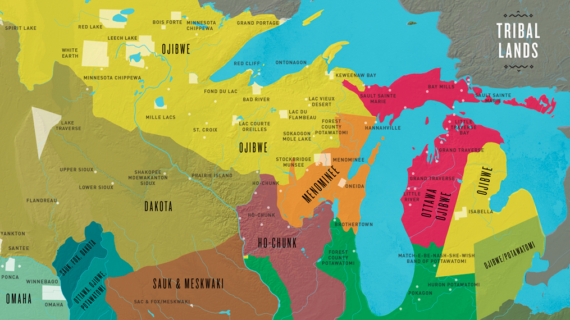
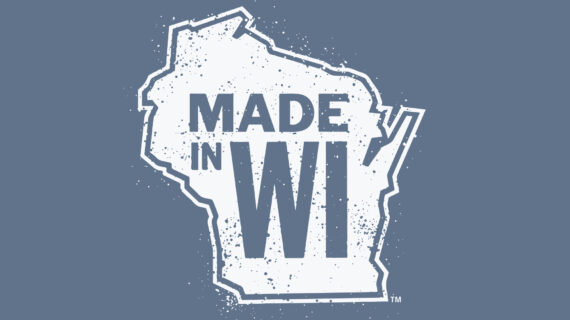
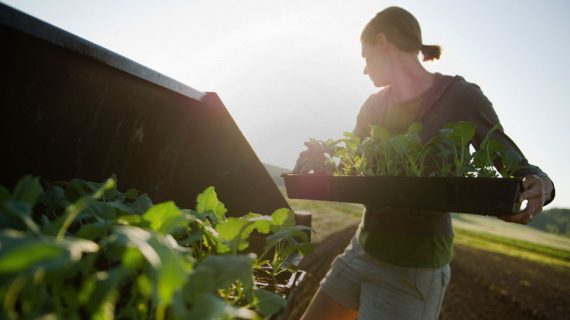
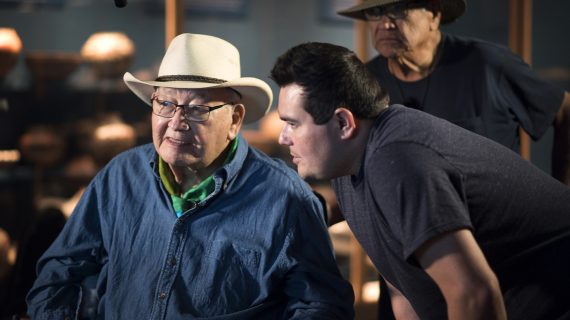


Follow Us